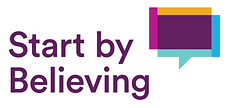
Resources

In Safe Hands
Training for primary health and wellbeing practitioners
Learning to prevent violence happens in conversation between one caring practitioner or wellbeing worker, with another, regardless of risk.
The video's here walk you through the C-10, a problem-structuring tool that explains factors behind the drivers of violence, and how to stop them from building to threshold levels.
Listen to Bill's thoughts on violence prevention and experience in the field.
A primer in how to stop fighting, this video shows a violence prevention strategy developed by men including men with first nation Australian heritage, to teach ourselves and others the basic steps to disrupt the well learned reactions of confrontational conflict escalation between people.
The group gave each other permission to use the strategy, phrases and resources in their work and personal life and no intellectual rights were or have ever been asserted. Dr Bill has used the '4-G' strategy in clinical practice ever since.
In response to requests to make it easier to share, this video was made.
Please remember that power abuse has only ever stopped when people who abuse power stop. Escalation has never been an effective intervention.

Reproductive Coercion
Violence Prevention Australia supports efforts to prevent reproductive coercive abuse.
The following links provide background on this growing field of concern and we believe that young women are particularly vulnerable to the intersections of partner, family and community coercions in their reproductive careers.
We believe that this is an area that needs a thorough conversation. We hope these resources can stimulate that discussion.
Futures has been providing programs, plicies, and campaigns to break the cycle of violence. They run major conferences, have a library of excellent webinars and resources, and are world leaders in education and policy.
We recommend their resources page.
The National Coalition Against Domestic Violence, USA. This is a coalition of organisation dedicated to the elimination of domestic violence. Its work includes education, advocacy and awareness raising.
A excellent store of resources covers many types of violence, target populations and practical supports.
With a focus on the north America, many practices could be adapted to Australian cultures.

Our Watch is a national leader in the primary prevention of violence against women and their children, setting the framework for addressing the prevention of Violence Against Women, in Australia.
Start by Believing seeks to educate everyone, including responders, to believe people when they tell you something has happened to them. They run global campaigns to transform the way we respond to sexual assault and make a difference to the lives of survivors by fostering safe and supportive environments for disclosure.
This service is focussed on its local communities and showcases many educational tools and approaches from preschool to university.
The organisation has won awards for their film "We See You" targeting transitioning youth with a great by-line: If you think you need a helpline, there is never a bad time to call.
There's never a bad time to call.

Respect Victoria
Respect Victoria is an independent prevention agency for the prevention of all types of family violence and violence against women.
Respect Victoria funds original research for the prevention violence commissioned in Australia. They also have the first data platform measuring indicators of prevention for the State of Victoria, and a tool kit to educate people about the findings of the National Community Attitudes Survey.
Ben Atherton-Zeman is a one-man show and a great example of what one man can do to educate hundreds.
His website is about the production, however, click the link below to his handouts page and find some exceptional pieces of wisdom.
Simple, practical ideas for action.
ANROWS is a not-for-profit research organisation focused on the reduction of violence against women and their children.
Guided by a National Research Agenda, it manages past and present research reports, academic studies, literature reviews and more. It manages an extensive research warehouse of historical research, commissions research and runs regular webinars and dissemination activities.
Understanding human trafficking is such an important topic for safe communities and the prevention of violence of some of the most marginalised people in the world.
LCHT provide training and excellent resources.

Prof Sylvia Walby has been the head of Violence and Society UNESCO Centre for 20 years. Now at City University, London, her work is of great significance and captures wider social causes and effects of violence while mainstreaming gender, and is highly recommended.
This guide looks at the connection between the trucking industry and human trafficking in the USA. It includes information about why human trafficking is prevalent in trucking, how people are victimized, and the signs all of us can look out for.

Human trafficking is the business of stealing freedom for profit. In some cases, traffickers trick, defraud or physically force victims into selling sex. In others, victims are lied to, assaulted, threatened or manipulated into working under inhumane, illegal or otherwise unacceptable conditions. It is a multi-billion dollar criminal industry that denies freedom to 24.9 million people around the world.
The Royal Australian College of General Practitioners provide a free resource, the White Book, for GPs and allied health services.

The Safer Families is an Australian Government funded Health and Medical Research Centre and has great resources that are publicly available and easy to access.
Hollaback! tackles harassment in all its forms by transforming the cultures that perpetuate hate and harassment.
Leadership, training, resources and a vast number of other creative resources are available on their website. They have a global reach

Very active in the research space, the Centre has a long list of resources and ongoing projects to keep an eye on.
The Prevalence of Acquired Brain Injury Among Victims and Perpetrators of Family Violence - Brain Injury Australia’s report into Australia’s first research into Domestic and Family Violence (DFV) and Acquired Brain Injury (ABI) funded by the (then) Department of Health and Human Services, and launched May 1st, 2018 by 2015’s Australian of the Year and (then) Chair of the Victorian Government's family violence Victim Survivors’ Advisory Council - Rosie Batty AO - in front of 250 people at Melbourne’s Town Hall.
Among the research’s key findings: 2 in every 5 of the 16,000 victims of family violence attending Victorian hospitals over a decade had sustained a brain injury; nearly 1 in every 3 of the victims of family violence were children, and, of those, 1 in every 4 had sustained a brain injury.

Financial abuse occurs in up to 98% of abusive relationships and is one of the top reasons that it is difficult for people to leave. Unfortunately, many people do not even recognize financial abuse as abuse.
To address this prevalent issue and provide the necessary education on this topic, US firm Annuity recently created helpful financial literacy resources for women and on the topic of financial abuse. The guides cover: What financial abuse, the warning signs, and ways to tell if someone is being financially abused.
These are US based documents but cover a lot of great generic material that will be helpful to those needing information on what financial abuse is all about.
















